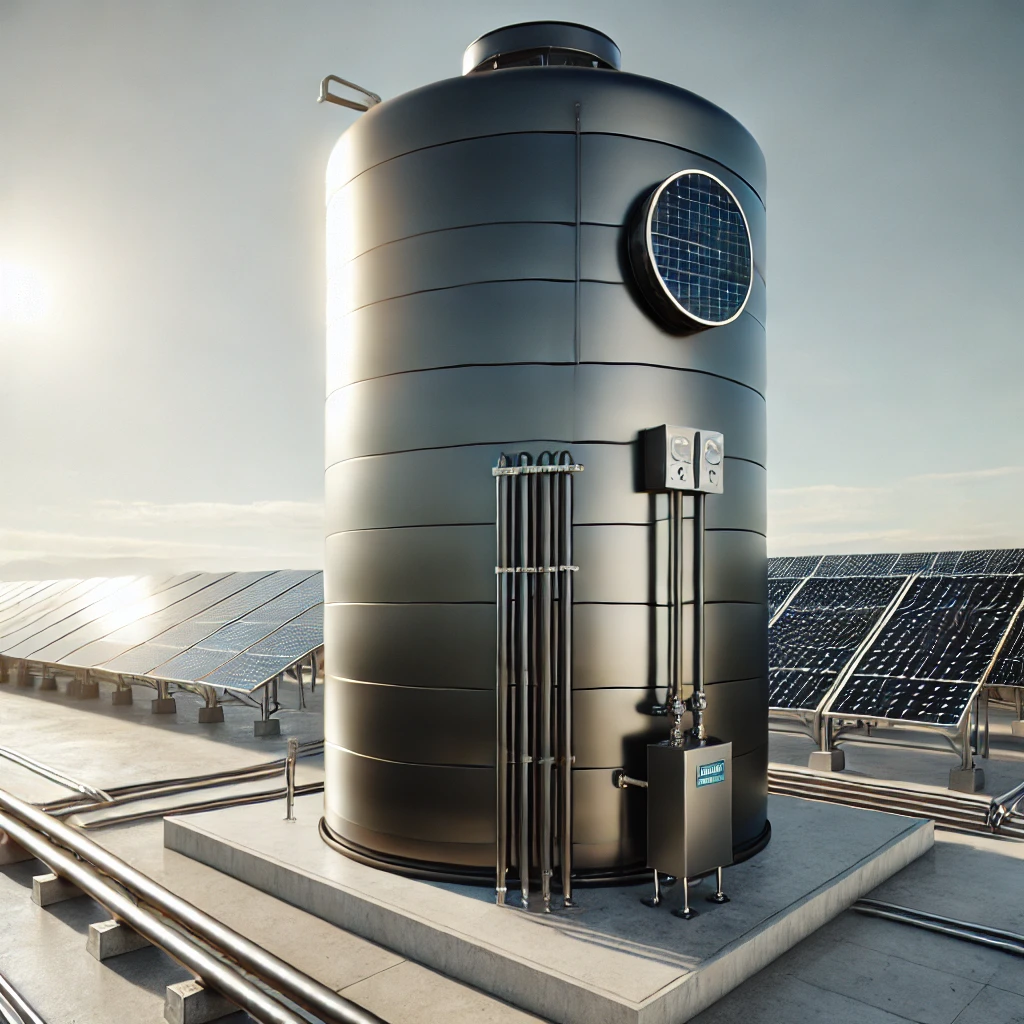Thermal Energy Storage: An Overview
Thermal energy storage (TES) is a technology that stores thermal energy by heating or cooling a medium, allowing the stored energy to be used at a later time. This system plays a crucial role in enhancing energy efficiency and reliability, especially in applications where energy demand and supply do not coincide.
Forms of Thermal Energy Storage
Sensible Heat Storage:
Sensible heat storage involves storing energy by increasing the temperature of a storage medium, typically water, sand, or rocks.
This method is widely used in heating and cooling applications, such as solar water heating systems and district heating.
The amount of stored energy depends on the temperature difference and the heat capacity of the medium.
Latent Heat Storage:
Latent heat storage stores energy during phase changes of a material, like melting or solidifying a phase change material (PCM).
Common PCMs include paraffin wax, salts, and ice.
It offers high energy density and stores large amounts of heat within a relatively small temperature range.
Thermochemical Energy Storage:
This method stores heat through reversible chemical reactions. Energy is absorbed or released during the breaking or formation of chemical bonds.
It provides high storage density and long-term storage capability.
Examples include metal hydrides and salt hydrates.
Solar Thermal Energy Storage:
Solar thermal energy storage captures heat from solar radiation and stores it for later use.
Common technologies include molten salt storage and concentrated solar power (CSP) plants.
The stored energy can be used to generate electricity or provide heating, even when sunlight is unavailable.
Waste Heat Utilization for Storage:
Waste heat from industrial processes can be stored using thermal energy storage systems for later utilization.
This approach reduces energy waste and lowers greenhouse gas emissions, contributing to sustainable energy management.

Importance of Thermal Energy Storage
Energy Efficiency: TES systems enhance energy utilization by storing excess or waste heat and making it available when needed.
Renewable Integration: They enable better integration of renewable energy sources, like solar and geothermal, by storing energy during peak production periods.
Cost Savings: By storing thermal energy, users can reduce reliance on expensive peak-time electricity, lowering energy costs.
Grid Stability: TES systems support grid stability by shifting energy demand and supply, especially when integrated with variable renewable sources.
Environmental Benefits of Solar Thermal Energy Storage
Solar thermal energy storage offers several environmental benefits:
Reduction in Fossil Fuel Dependency: Storing solar heat for later use decreases the need for fossil fuel-based power generation.
Lower Carbon Emissions: By utilizing clean solar energy, TES significantly reduces greenhouse gas emissions.
Waste Heat Recovery: Capturing and storing waste heat from solar thermal systems reduces thermal pollution and conserves energy.
Sustainable Energy Supply: Solar thermal storage contributes to a more reliable and sustainable energy system.
Conclusion
Thermal energy storage is a vital technology for achieving energy efficiency and sustainability. By storing excess heat from renewable sources or waste heat from industrial processes, TES minimizes energy waste and contributes to a cleaner, more reliable energy system. As solar thermal storage continues to evolve, it holds great potential for reducing carbon footprints.